In July last year we were invited to carry out a rental valuation at a period property in Sutton Mandeville, a small village to the west of Wilton near Salisbury. The prospective clients were acting on behalf of their elderly parents and the family had decided to put the house on the rental market rather than sell. The original farmhouse was purchased in 1969 and had been a much-loved family home for many years.
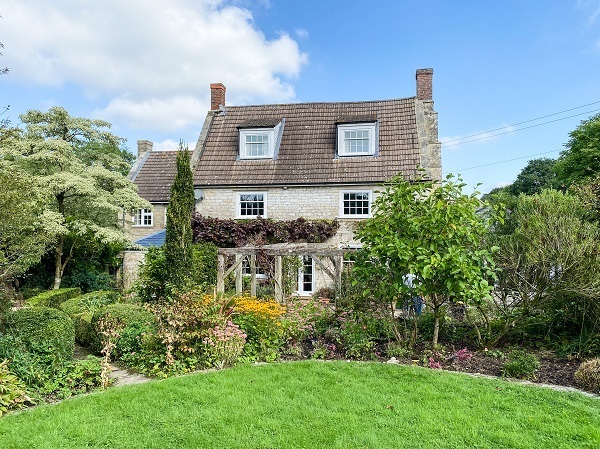
We loved the house from the moment we first saw it; situated in the most beautiful gardens and with river frontage, this 5 bed country home was full of charm and character. However, as you can imagine, 5 bed country homes oozing with character and charm don’t always meet the requirements of lettings legislation and this one fell at the first hurdle with an EPC rating of F.
And so began our journey to get this stunning property up to a standard fit for letting. Read on to learn about the challenges we faced in order to make this particular property fully compliant for the lettings market.
Period properties make wonderful homes, however they often lack the energy efficiency features that are now required for letting.
Currently, privately rented properties must have a minimum EPC rating of E. The most common measures to increase energy efficiency are normally to install a new boiler, put in cavity wall insulation, loft insulation or install double glazing. However, the boiler at this property was relatively new, cavity wall insulation was not an option and much of the attic space could not be accessed! We engaged the services of 2 specialist energy assessors to advise on what measures could be taken to get the house up to the required standard.
FINDING THE TRADITIONAL CRAFTMANSHIP SKILLS
It soon became evident that there was actually quite a lot of ‘routine’ maintenance that needed to be done; the oak staircase needed supporting, stone mullion windows needed repairing, the roof was leaking and there were various damp patches that needed investigating. We met several local building firms on site to get quotes but the work was either too specialist or the firms didn’t have availability for months.
Luckily for us, we had a contact at Mouldings, a local firm with an excellent reputation who have the traditional craftsmanship skills that were required; lime plastering, stonework, leadwork, roof repairs, carpentry and joinery. Mouldings were instructed to undertake the entire project which seemed to get bigger and bigger every time we visited the house!
HOUSE CLEARANCE
The next thing on the list was to get the house cleared of all the furniture, pictures and personal items that had accumulated over 50 years. Aside from a freezer and larder full of food, the house was also filled with antiques and collectables and the library alone contained over 500 books many of which were rare collectors’ items. We set about finding the best local people to advise on what should go to auction and sourcing people to help with sorting and house clearance. We removed Sim cards from cameras, filled 3 skips, arranged for various items to be sold at auctions (3 in total!) and arranged a local storage container for items that our clients wanted to keep. The house was finally empty and ready for Mouldings to start working their magic.
ROOF REPAIRS
Throughout the house there was evidence of leaks from several areas of the roof and so Mouldings arranged for drone photography to get a better idea of the state of the roof. It was evident that there were problems with the chimneys and leadwork in various hidden gulleys and so scaffolding was erected. There was no point starting any re-decoration until the roof was repaired and thankfully the weather worked in our favour!
While the roof repairs were being undertaken, Mouldings also set to work inside the house preparing for the redecoration. The refurbishment project included a long list carpentry and joinery work which included:
- a bespoke oak kitchen worktop to sit against the marble worktop
- a new front door
- reinforcing and supporting the oak staircase
- making a bespoke oak letterbox
- new signs for the gates
Anyone who has tried to secure the services of a carpenter or joiner recently will know how hard it is to come by such skilled tradesmen. It was a joy to watch each project being completed and installed.
STONE MULLION WINDOW
Originally, stone mullions were structural elements which helped to support the weight of the building around them. They also helped to break up a window into several panes of glass, which made it less expensive to install. Glass used to be a very costly construction material and the use of large sheets of glass was uncommon because the biggest panes of glass were used to make mirrors.
There are 2 beautiful stone mullion windows on the oak staircase. Unfortunately, the stonework had deteriorated so much that the panes of glass were loose in the leadwork. Repairs to stone mullion windows is specialist work and so it was necessary to find a highly skilled stonemason to carry out the necessary work.
SEPTIC TANK
Septic tanks are very common in old rural properties and so it was no surprise that this was the sewerage system at this particular property. A septic tank settles the solids in the wastewater and then discharges the liquid septic waste into the ground through a well-designed drainage field. A drainage field (also known as an infiltration system), is a series of pipes with holes that are laid in trenches and arranged so that the effluent can trickle through the ground for further treatment.
Septic tanks cannot discharge into surface water drains, rivers, canals, ditches, streams or any other type of waterway. And, if the septic tank drains into a drainage field, this has to be a certain distance away from a water course.
Septic tanks are now governed by strict regulations and if a septic tank discharges into e.g. a stream or river, it must be replaced with a full sewage treatment plant and the fines for non-compliance are significant. With the River Nadder running through the garden, finding a solution was complicated and challenging. We had site visits with various local companies to explore the options and in the end Craig Simpson Drainage was selected because of their extensive knowledge and help with the building control application.
DECORATION
When overseeing the refurbishment of someone’s home for rental purposes, there is a balance to be had between the landlord’s personal preference, cost, and the practicalities of renting. Our recommendation is always not to put wallpaper in a rental property. Aside from the additional cost, if any part is accidentally damaged during the tenancy, it would generally be deemed as ‘unreasonable’ to charge the cost of repair/replacement to tenants.
Some of the rooms were covered with wallpaper which had been in place for many years. Much of the wallpaper was damaged from water ingress and this often hides damage to the plasterwork underneath. As a result, extensive replastering was required in many of the rooms which presented a perfect opportunity to paint rather than re-paper!
However, to retain the character and style of the house, our clients were very keen that the wallpaper was replaced with something similar and so chose beautiful paper from Colefax & Fowler and Jane Churchill.
CARPETS & FLOORING
The same advice applies when choosing carpets and as a general rule we do not recommend wool carpet in a large country house. Carpet moth is on the increase and this can cause substantial damage if left unchecked. That said, most wool carpet is now treated to prevent carpet moth infestation.
The same carpet can look very different in each room depending on light and wall colour and so to find one colour which suited room was challenging to say the least! To ensure we were making the right choice for our clients, we obtained numerous carpet samples and photographed the samples in each room and in different light to see which worked best. Having whittled down the options from 20 to 5, we then had a video call with the client to recommend our choice. The decision-making process was further hampered by availability issues but the benefit of working with a small local business paid off and Salisbury Carpets’ extensive knowledge and expertise ensured we chose the right carpet which could be delivered and fitted in the required timescale.
THE GARDEN & GARDEN MACHINERY
Early one morning we received a call from the housekeeper to report that thieves had broken into one of the garages and stolen the ride-on mower and other bits of garden machinery. After liaising with the Police the next thing was to make the garage secure so that the thieves could not return and steal the remaining tools. Mouldings to the rescue once again so that security lights could be installed and the damaged garage door was boarded up until the door could be repaired.
As with many old farmhouses, this one comes with 5 acres of grounds which include a secret garden, manicured lawn, extensive flower beds filled with rare and unusual plants, and a state-of-the-art greenhouse. The garden also has an ornamental pond which was choked with weeds and had a rotten viewing platform.

The refurbishment has not been without its issues however, five months on we are reaching the final stages. The photographer is booked and we are all really excited at the prospect of bringing this beautiful and fully restored home to the lettings market.
For more information or to arrange a viewing, please contact Piccolo on 01722 580059 or email info@piccoloproperty.co.uk.

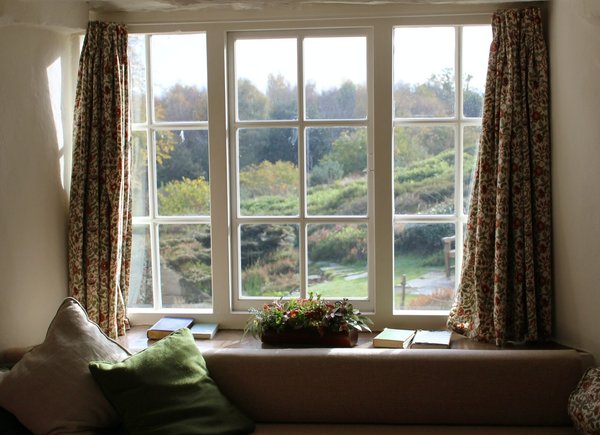
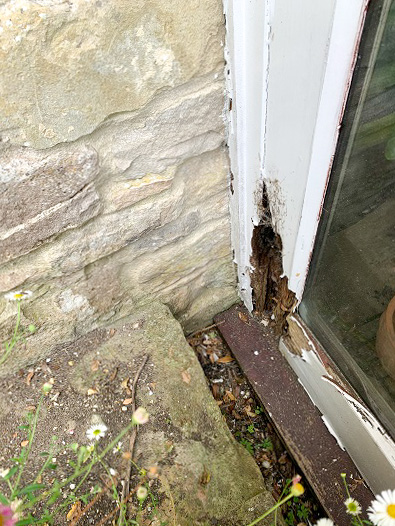
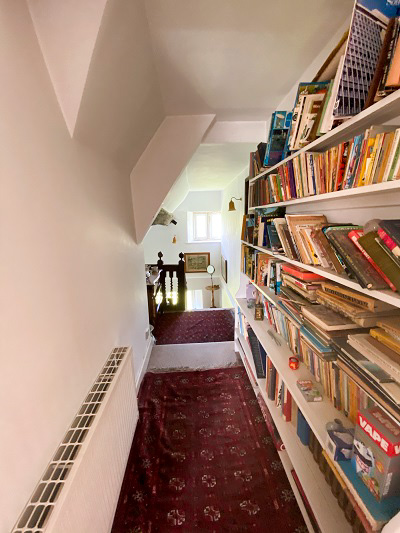


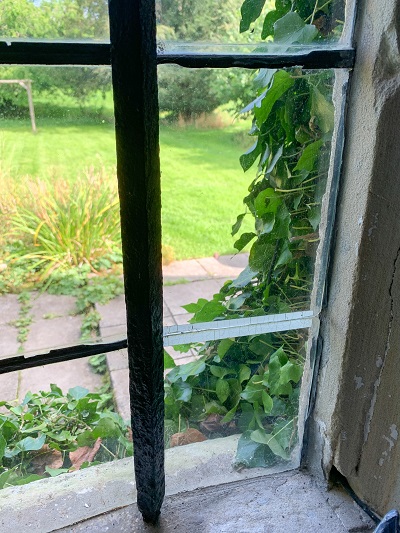

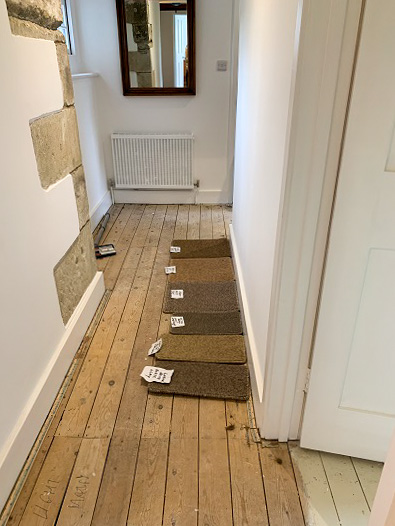




Share this with
Email
Facebook
Messenger
Twitter
Pinterest
LinkedIn
Copy this link